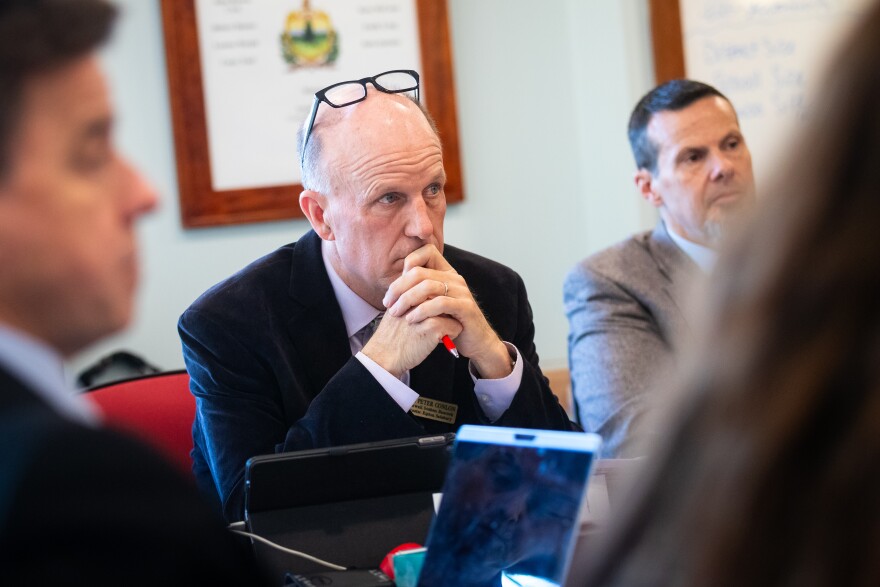A sudden reversal by President Trump’s Education Department could leave Vermont schools holding the bag for millions of dollars in unreimbursed pandemic recovery projects.
Jill Briggs Campbell, Vermont’s deputy education secretary, told state lawmakers Wednesday they estimated school districts statewide had about $16.7 million in collective exposure.
In the wake of COVID-19, Congress signed off on over $189 billion in relief money to schools. Only a small fraction is left, but the cash unclaimed nationwide still totals about $3 billion, according to an analysis of federal data by the Associated Press. Districts initially had until this January to finish projects and bill the federal government, but the Biden administration later told schools they could have extra time.
As recently as last Wednesday, state education officials visiting Washington, D.C. were given assurances by federal officials that this grace period would remain in effect, according to Briggs Campbell. But two days later, U.S. Education Secretary Linda McMahon to announce the federal government would actually hold back any remaining aid.
“The Department’s initial approval of your extension request does not change anything,�� McMahon wrote, adding that schools were only entitled to reimbursements for work done and invoiced within the original deadlines, which schools “failed�� to meet.
“Any reliance on a discretionary extension subject to reconsideration by the agency was unreasonable,�� the U.S. secretary of education said.
While rumors had already begun to swirl that such a reversal was coming, states were given no time to prepare. The clawback was effective as of three minutes before McMahon’s letter even landed in state officials�� inboxes, Briggs Campbell noted.
“We’re observing an administration that doesn’t seem to be coordinating with itself,�� she told members of the House Committee on Education.

The projects Vermont schools still planned to request reimbursement for vary widely, and include everything from construction projects to literacy programming. They are also in varying states of completion. In some cases, according to Briggs Campbell, everything is done, and schools were holding off on submitting invoices because they were awaiting updated reimbursement guidance. In others cases, services were ongoing, or planned for this summer.
McMahon said in her letter to states that the Education Department would consider extensions “on an individual project-specific basis.�� But while Briggs Campbell said that the state planned to ask for as many waivers as possible, she suggested Vermont shouldn’t bank on receiving a dime.
House Education chair Rep. Peter Conlon implied he agreed, noting that such waivers, which would presumably cover “tens of thousands of projects�� across the country, would be reviewed by “a newly slimmed down department.�� (The Trump administration has by about half.)
Briggs Campbell replied that she didn’t necessarily assume education department staff would be reviewing waivers. It was more likely, she said, that the Department of Government Efficiency, the initiative led by billionaire Elon Musk, would be in charge.
We’re observing an administration that doesn’t seem to be coordinating with itself.Vermont Deputy Education Secretary Jill Briggs Campbell, speaking about the Trump administration
Anne Bordonaro, who oversees federal education for the Vermont Agency of Education, added that federal education officials she and Briggs Campbell had spoken to appeared completely “taken aback�� by what had transpired.
“It sounds like they learned about it at the same time we did,�� Bordonaro said.
Vermont schools received in federal pandemic aid, and Briggs Campbell emphasized several times that, all things considered, Vermont stood to lose only a very small sliver of the money it had planned to receive.
But the Education Department’s actions underscore the state’s vulnerabilities as Trump and his Republican allies in Congress contemplate even steeper cuts to federal aid. And the news comes at a time when the rising cost of schools �� and property taxes �� has come to dominate the conversation in Montpelier.
“The challenge is that a $16 million hit to the [Education Fund] is still a $16 million hit,�� Conlon said.






